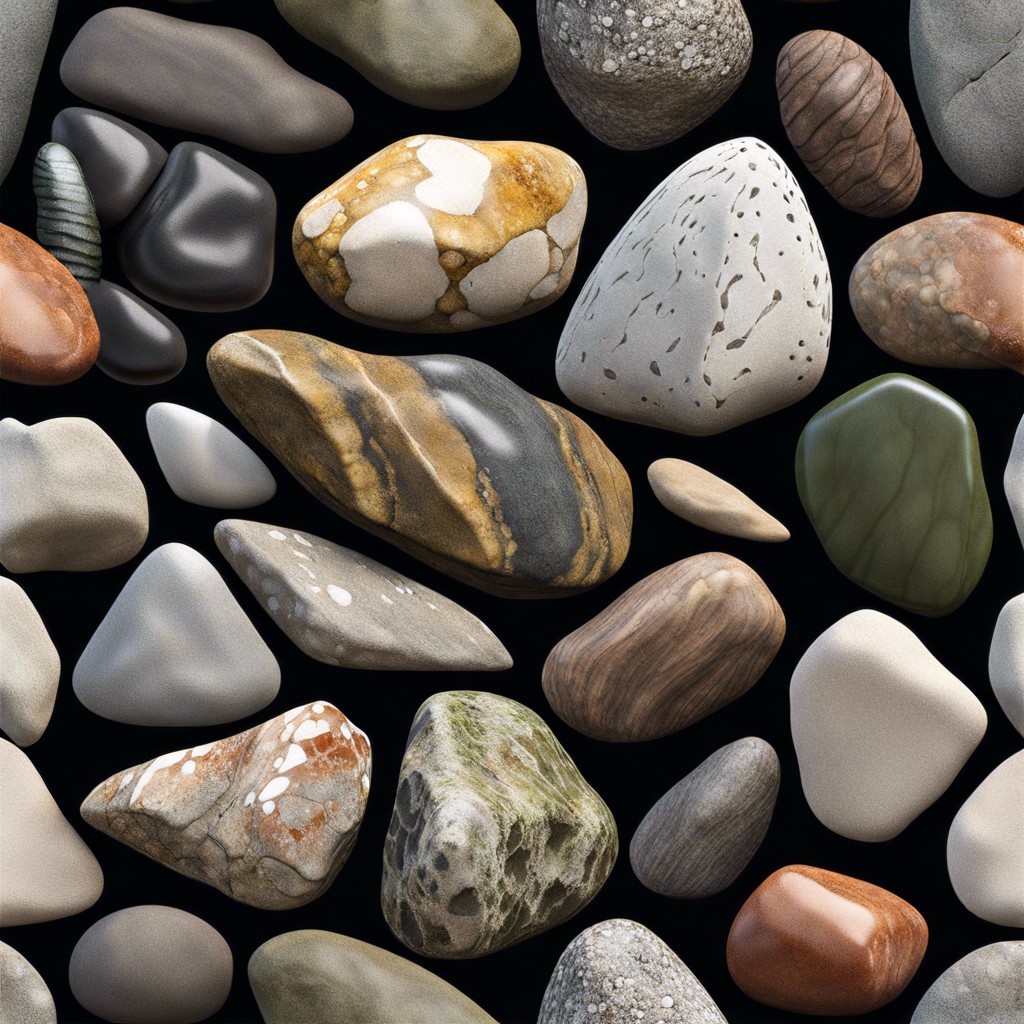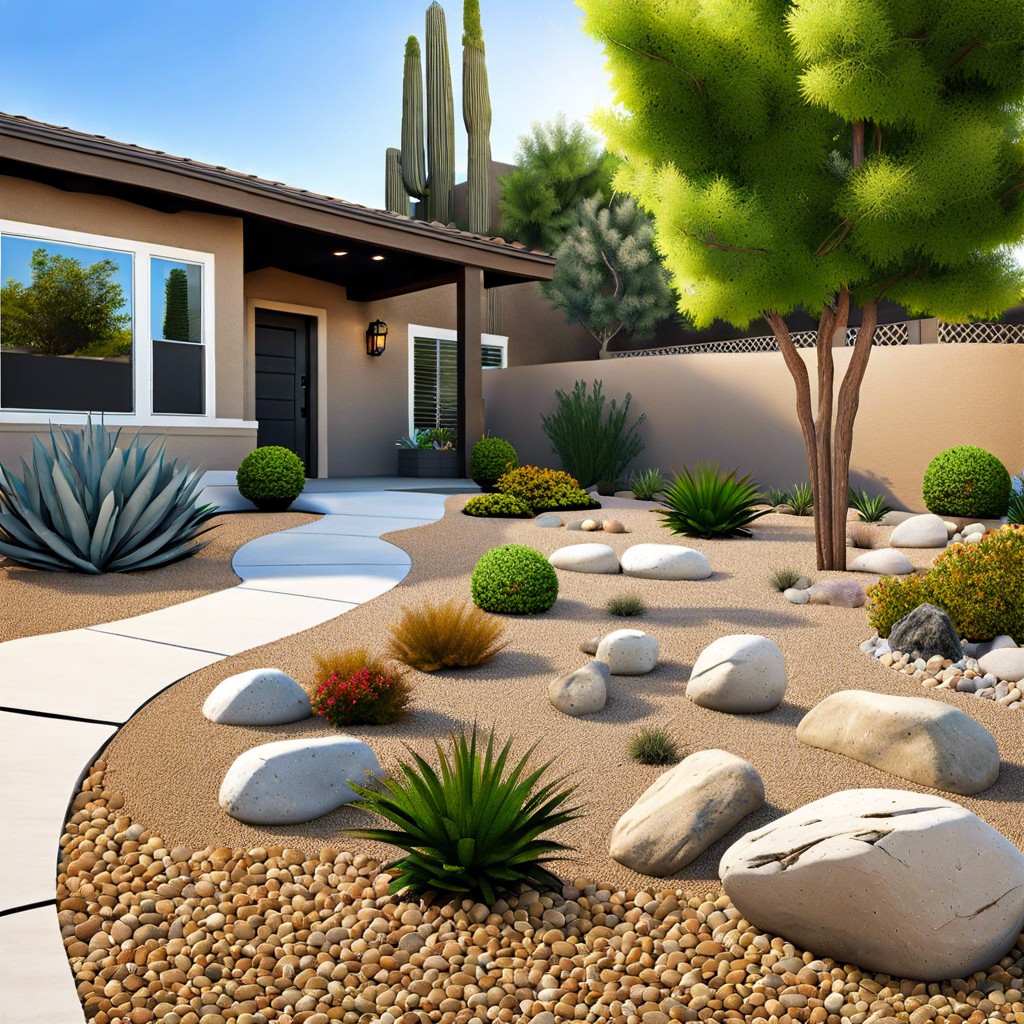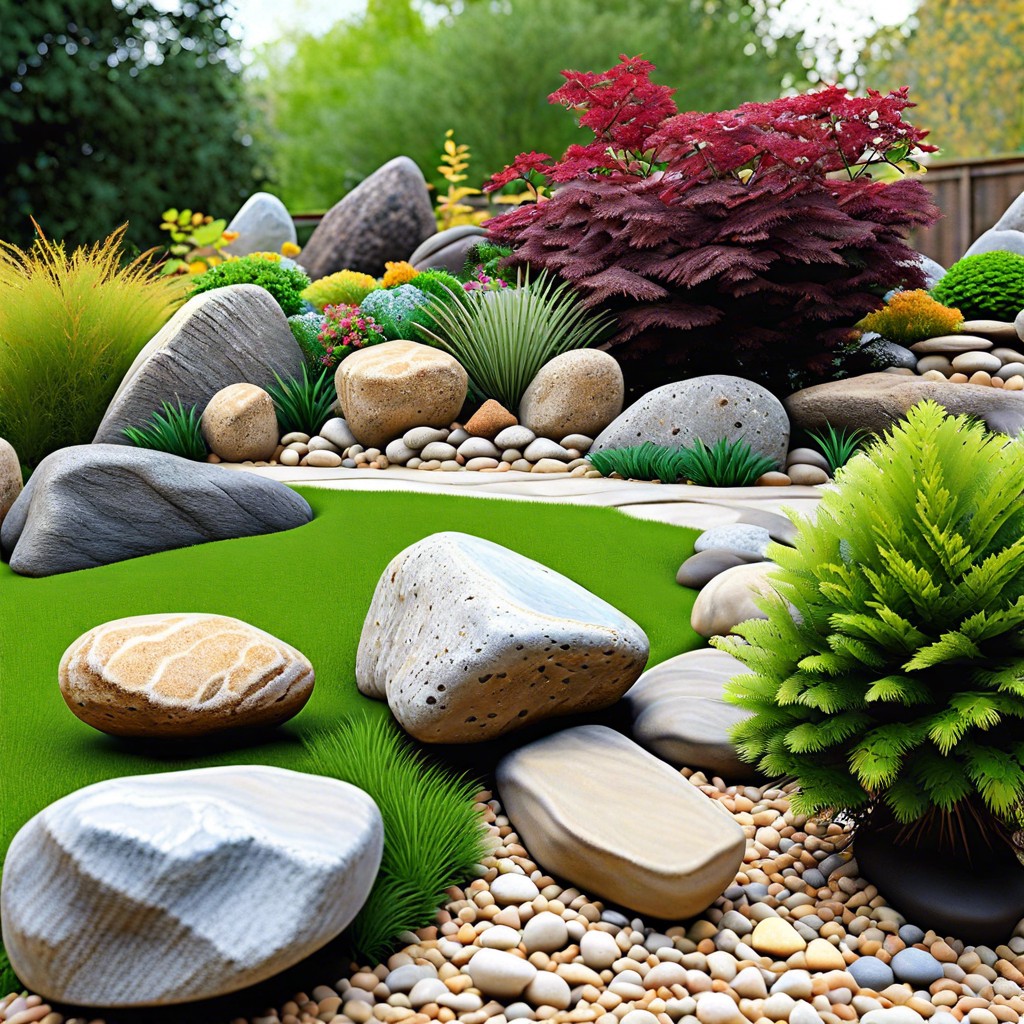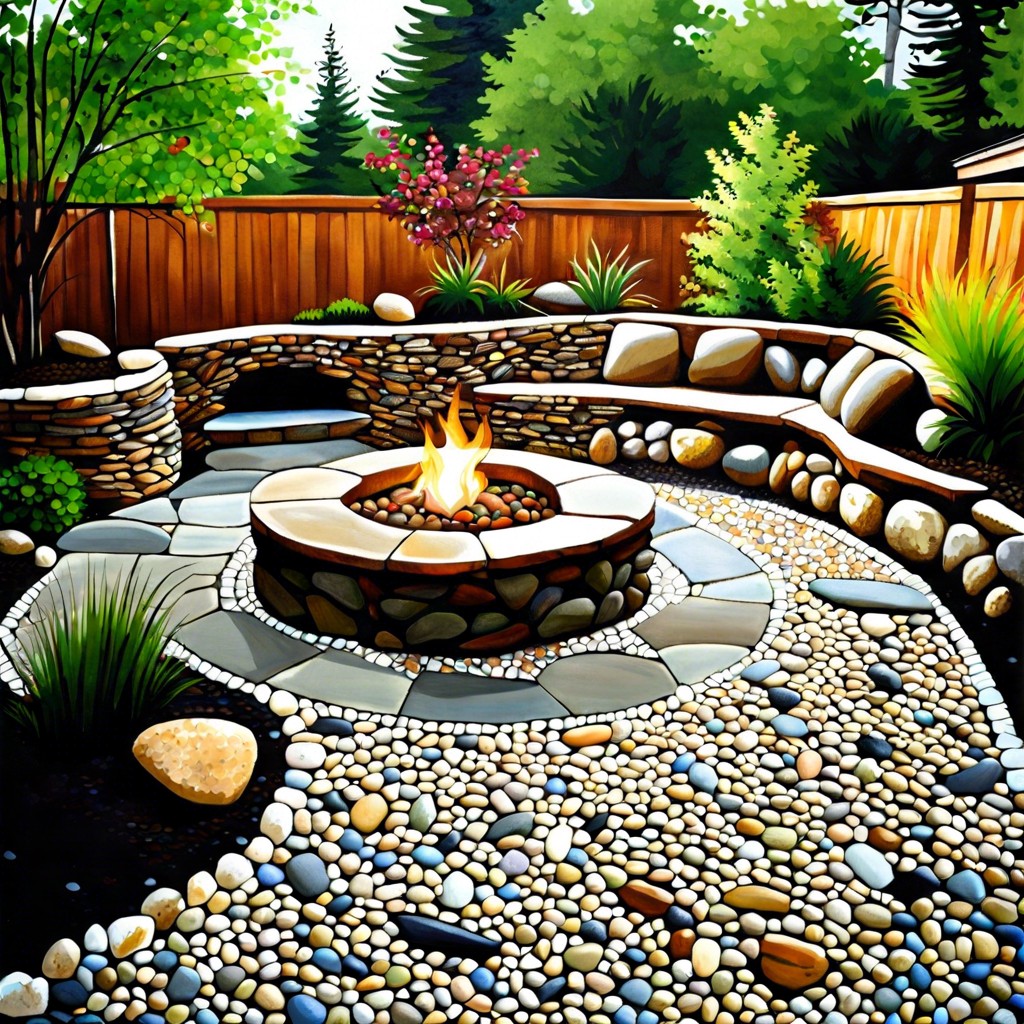Welcome to our buying guide on landscape rocks, where you’ll learn how to select the right types and sizes for your garden and the factors to consider for a harmonious outdoor space.
Key takeaways:
- Pea gravel is versatile, budget-friendly, and provides excellent drainage.
- River rocks add a natural and serene feel to outdoor spaces.
- Decomposed granite is stable, easy to install, and environmentally friendly.
- Flagstone offers a unique blend of strength and beauty.
- Boulders serve as statement pieces and add texture to landscapes.
Types of Landscape Rocks

Pea gravel, often characterized by its small, rounded stones, provides a smooth texture and is a popular choice for pathways and playgrounds. Its variety of colors also makes it suitable for decorative purposes.
River rock, larger and more polished, often features an assortment of shapes and hues. This type is ideal for creating natural-looking water features or adding an organic touch to garden beds.
Decomposed granite is granular and can compact over time, making it a stable base for walkways and driveways. Its rustic, natural appearance harmonizes with most landscapes.
Flagstone offers a flat, slab-like shape that’s perfect for creating stunning patios and walkways. Its irregular contours add a unique, earthy charm when used as stepping stones or as accent pieces among other rocks.
Boulders are the statement pieces of landscape design. Massive and striking, they anchor a space and can serve as natural art pieces or functional elements like seating. Strategically placed, boulders add dramatic texture and dimension to your outdoor space.
Pea Gravel
One of the most versatile and accessible options, pea gravel comprises small, smooth, rounded stones that resemble peas. Its size typically ranges from 1/8 to 3/8 inch, making it ideal for paths, patios, and playgrounds. The stones come in an array of neutral colors such as brown, gray, and cream, with the occasional rust-colored shades adding to the mix.
Due to its size, pea gravel provides excellent drainage, preventing water from pooling in your landscape. It’s also comfortable to walk on, and the stones are firm enough to provide stable ground while still being gentle on feet. Because of their round shape, they don’t interlock, which means they may shift over time, but this also allows for easy repair and maintenance. Just rake the gravel back into place for a refreshed look.
When using pea gravel, it is important to have solid edging to keep the stones contained in the desired area. Additionally, it’s a budget-friendly choice, often used in lieu of more expensive paving materials for a natural and minimalist aesthetic. It’s especially favored in xeriscaping due to its potential for water conservation.
River Rock
Smooth and rounded by the natural flow of river currents, river rocks add a serene and organic feel to any outdoor space. Typically ranging in size from 1 to 5 inches, they are a versatile choice for homeowners looking to create a natural-looking landscape.
One of the most appealing aspects of these rocks is their varied hues, often encompassing shades of gray, brown, white, and sometimes even blues and greens. This color mix can complement a multitude of design plans, ensuring that they don’t clash with existing features in your yard.
Not only are they aesthetically pleasing, but they also serve functional purposes. Larger river rocks are excellent for creating dry creek beds that channel and manage water flow in your landscape, while smaller sizes provide a smooth, even ground cover that can act as a pathway or fill around pavers.
Because of their weight, river rocks stay in place better than lighter weight options, making them a reliable choice for areas prone to wind or water movement. Their long-lasting nature means less frequent topping up over the years, which is an important consideration for both effort and budget.
Incorporating these rocks into your landscape should be done with care. Position them thoughtfully to mimic natural water erosion patterns, and consider pairing with succulents or ornamental grasses for a dynamic and textured garden composition. River rocks are not just a practical choice; they bring a little piece of the tranquility of a riverbed right to your home.
Decomposed Granite
Decomposed granite is a versatile material known for its sandy and granular texture. It’s derived from the natural weathering and erosion of solid granite, a tough and durable rock. What makes this type a favorite among gardeners and landscapers is its stability and ease of installation. It tends to compact well, forming a stable surface that’s less prone to being disturbed by weather or foot traffic than other loose materials.
Often used to create pathways or as a ground cover in xeriscape gardens, decomposed granite can provide a rustic, natural look while also offering excellent drainage. It’s available in a variety of colors, ranging from tan to gray, and can complement many different landscape designs.
Installation involves clearing and leveling the area, spreading the granite, and then compacting it to a smooth surface. Moreover, it can be stabilized with a binder to reduce dust and erosion, making it more durable.
One of the appeals of decomposed granite is its environmental friendliness. It provides good coverage, reducing water usage, and its permeability promotes healthy soil by allowing rainwater to penetrate quickly, rather than running off and causing erosion.
For the best results, periodic replenishment might be necessary as the particles can eventually settle and compact over time. Although durable, decomposed granite paths or surfaces may require an occasional top-up to keep them looking fresh and maintaining function.
Flagstone
Flagstone offers a unique blend of functional strength and natural beauty, making it a favored choice for walkways, patios, and edging. These flat slabs of rock, usually sourced from split layers of sedimentary stone, come in varied sizes and shapes suited to a versatile range of design aesthetics. The color ranges from warm earth tones to cool blues and greys, enabling seamless integration with different outdoor themes.
Its irregular contours bring a rustic charm to the garden, providing a sturdy surface that blends well with greenery and other elements. The gaps between flagstones can be filled with sand, ground cover plants, or gravel, lending both stability and a touch of creativity. Given its durability, flagstone is also an excellent investment for those looking to add enduring appeal to their landscape.
Installation requires a bit of planning due to its weight and irregular thickness. For a harmonious look, select stones with similar thicknesses and lay them out dry to finalize the pattern before setting them in place. Although flagstone can be pricier than some other options, its longevity and the natural allure it offers justify the investment for many homeowners.




